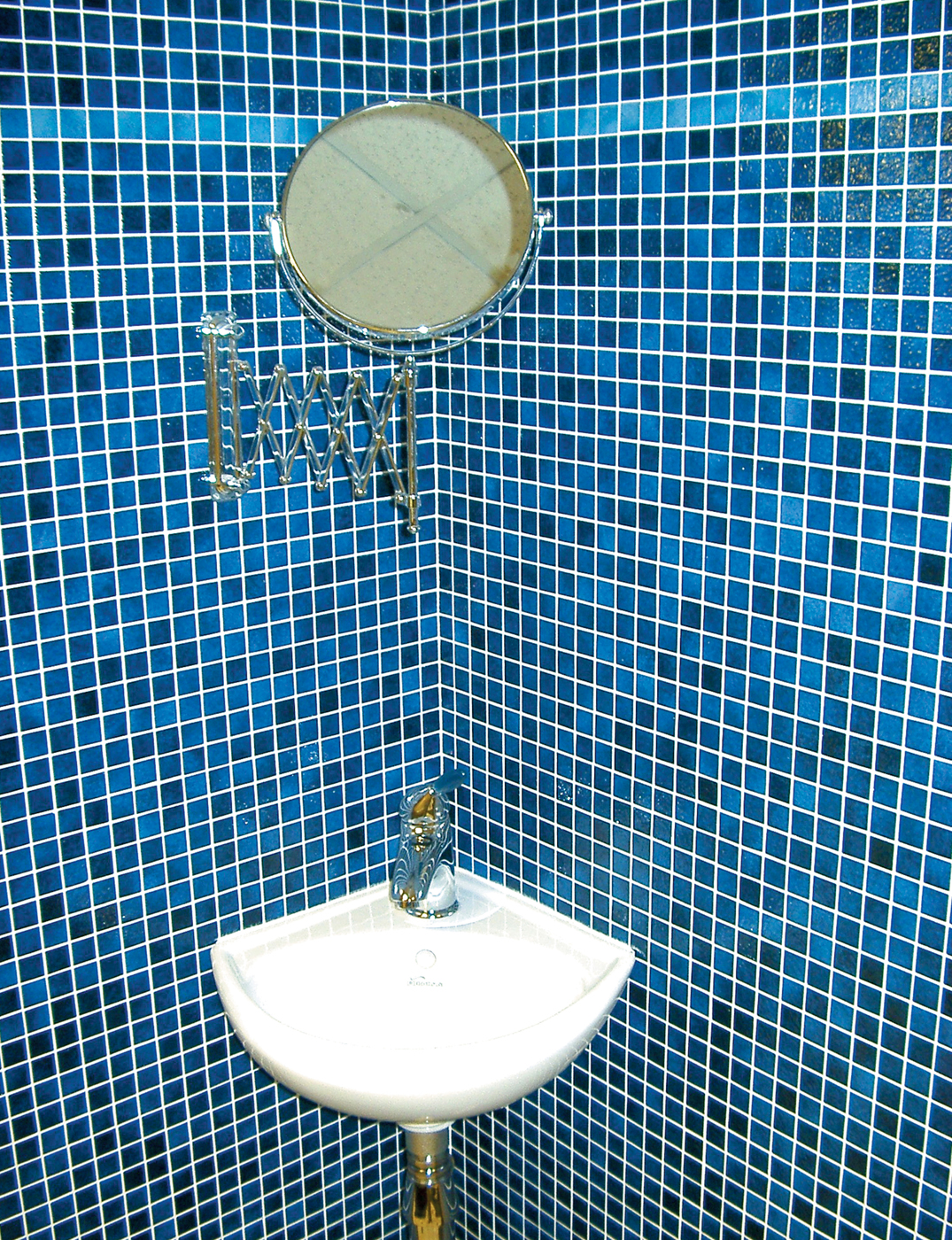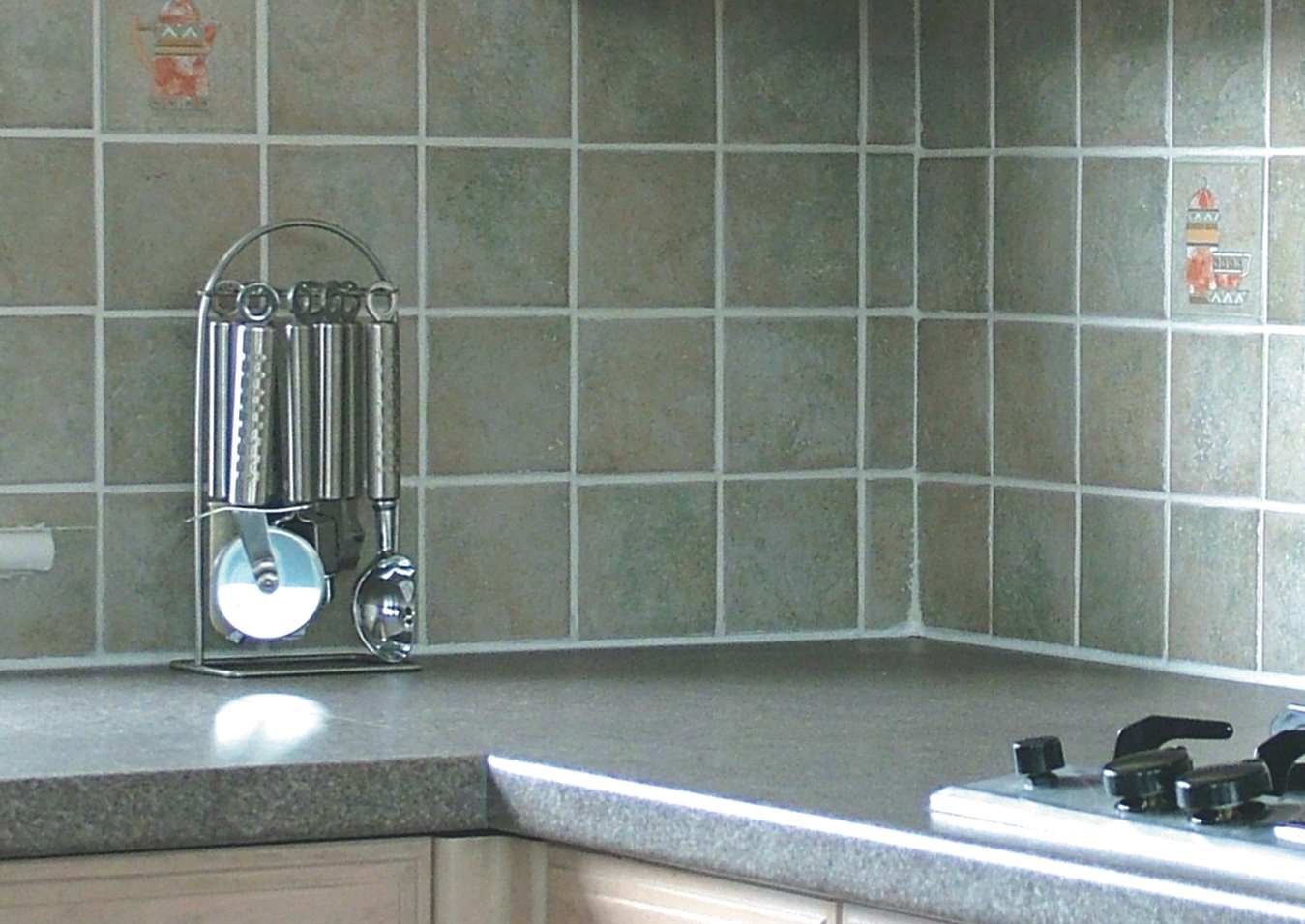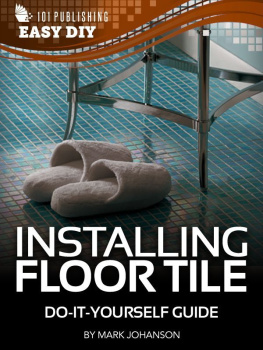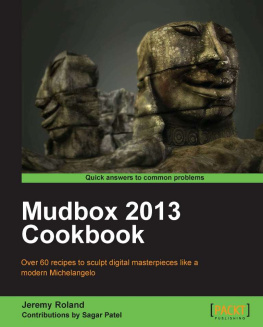
A small area of intense colour can give tremendous impact to a room.
CERAMIC
AND STONE TILING
A Complete Guide
JOHN RIPLEY

THE CROWOOD PRESS
First published in 2005 by
The Crowood Press Ltd
Ramsbury, Marlborough
Wiltshire SN8 2HR
www.crowood.com
This e-book first published in 2015.
John Ripley 2005
All rights reserved. No part of this publication may be reproduced or transmitted in any form or by any means, electronic or mechanical, including photocopy, recording, or any information storage and retrieval system, without permission in writing from the publishers.
British Library Cataloguing-in-Publication Data
A catalogue record for this book is available from the British Library.
ISBN 978 1 84797 968 1
The author and the publisher do not accept any responsibility in any manner whatsoever for any error, or omission, nor any loss, damage, injury, adverse outcome, or liability of any kind incurred as a result of the use of any of the information contained in this book, or reliance upon it.
Acknowledgements
We wish to thank the following companies and individuals for providing assistance with and/or material for this book.
A. Andrews and Sons (Marbles and Tiles) Ltd
For permission to take many of the photographs, both in their showroom and on site.
In particular Ian Taylor, David Clough, Colin Pogson & Colin Wood and his staff.
Schlter-Systems Ltd
For kindly providing photographs from their trim and accessory catalogue and price list.
R.H. (Dick) Fletcher
For checking the text for technical slip-ups and for his suggestions.
K.D. Denton
For making sure that the natural stone section was technically accurate.
Last but certainly not least, David Fretwell and Olwyn Raper for putting up with having their photographs taken whilst trying to get on with the job.
Contents

Tiling can be complicated! Second-century Roman mosaic. Villa del Casali, Sicily.
Preface
As is the case with most technical subjects, tiling is a much bigger field than is generally appreciated. It is more than just the tiles in modern kitchens and the large utilitarian ceramic tiles on the floors of shopping centres. It covers a huge range of materials and techniques. The pictorial mosaic work of the Roman and Byzantine empires and the incredibly complicated geometric designs of the Islamic world are all examples of the tilers skill.
Today, as with most skilled trades, fixing systems are changing due to commercial pressure. Techniques and skills that were once commonplace are now rare and in some cases are in danger of being lost altogether.
For nearly fifty years I have been privileged to work with some of the best tilers in the business, many of them now dead. Although this book doesnt attempt to cover more than the rudiments of the trade, it couldnt have been written without the knowledge acquired from the many fine tradesmen it has been my privilege to work with over the years.

Even if it is not your taste, a traditional style always looks good.

A more traditional look tends to date less quickly than the latest trend.
Introduction
The object of this book is to provide information that will enable a beginner to carry out tiling work to a satisfactory standard and to present the more competent do-it-yourself enthusiast with more detailed instructions than he or she might normally encounter. This book is definitely not intended to be a manual for the professional tiler. That would involve going into a depth of detail which is unnecessary for domestic work and which would probably bore anyone not directly involved in the trade.
There are many excellent books available that will provide enough information to enable you to carry out a competent tiling job for most domestic situations. Unfortunately, they rarely deal with the problems which we find ourselves facing in real life. This book contains plenty of information which will help you to avoid or overcome the difficulties that are most likely to crop up when doing actual tiling projects. Knowing how to do something is one thing. But knowing why it is done in that particular way enables you to understand the procedures involved in tiling and, hopefully, to foresee the problems that can arise.
Whilst it is not possible to give detailed instructions on how to overcome every difficulty, this book aims to give an insight into the processes involved and, in particular, what situations should be avoided. This, it is hoped, will provide sufficient information to assist you in making informed decisions on what needs to be done in most of the circumstances that are likely to arise in the average do-it-yourself project.
FUNCTION AND PURPOSE OF TILING
Why tile a surface in the first place? It is usually more expensive than paint or wallpaper, takes longer, is more difficult to do and the range of colours and patterns is little different from those available in other materials.
The reason is that tiles are very durable. They can resist knocks, abrasion and water, and can be used in situations where most other materials would quickly deteriorate. Ceramics are some of the most durable materials known to man and ceramic tiles can be counted on to last indefinitely without loosing the freshness of their appearance.
In both bathrooms and kitchens hygiene is important. Surfaces need to be cleaned regularly and thoroughly, often with abrasive chemical cleaners, without developing surface faults that could harbour bacteria. They also need to be hard and strong enough to withstand the day to day knocks which all such surfaces receive in commercial situations. Tiling can be the easiest way of providing a durable, easily cleaned surface, and commercially is often used just for these properties.
Tiles are most often used when a combination of durability and decoration is needed. Tile manufacturing techniques have evolved in a way that makes an enormous range of designs, textures and finishes available. Some of the technologies, such as stencilling and silk-screen printing, have been borrowed from other trades. Others, like encaustic decoration and mosaic work, are unique to tiling and have evolved into high art forms in their own right. The range of tiles available today is huge and covers just about any imaginable situation from the point of view of beauty or practicality.
Lastly, but certainly not least, is the desirability factor. The expensive decorative forms of tiling have always presented an image of both prestige and opulence. It is only in the last fifty years or so that decorative tiles of any type have been affordable to most people. A century ago even the most basic form of tiling would have been beyond the means of the majority of the population. Modern computerized manufacturing methods, combined with new fixatives and fixing techniques, now make it possible for everyone to have the finishes that were once only available to the wealthiest in society.
Next page

















